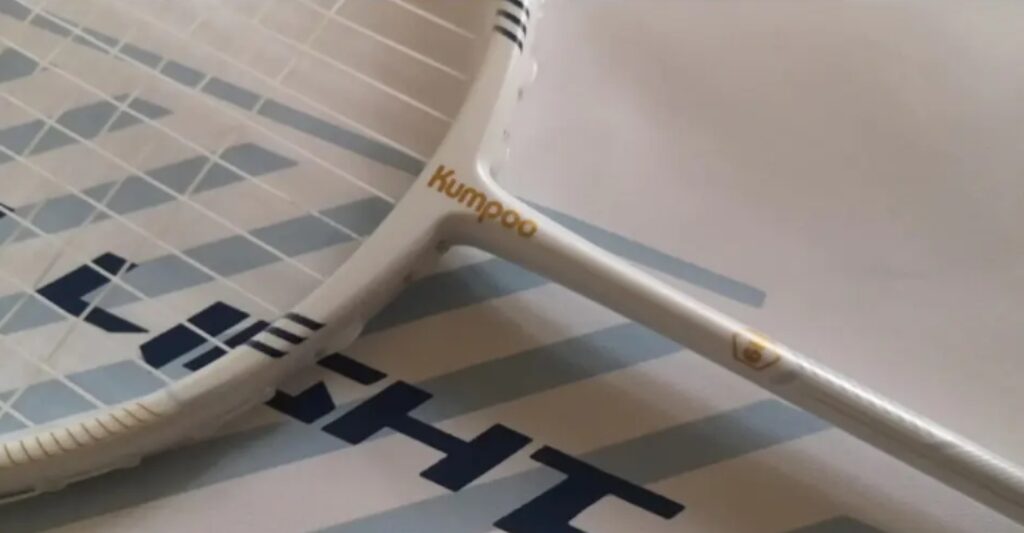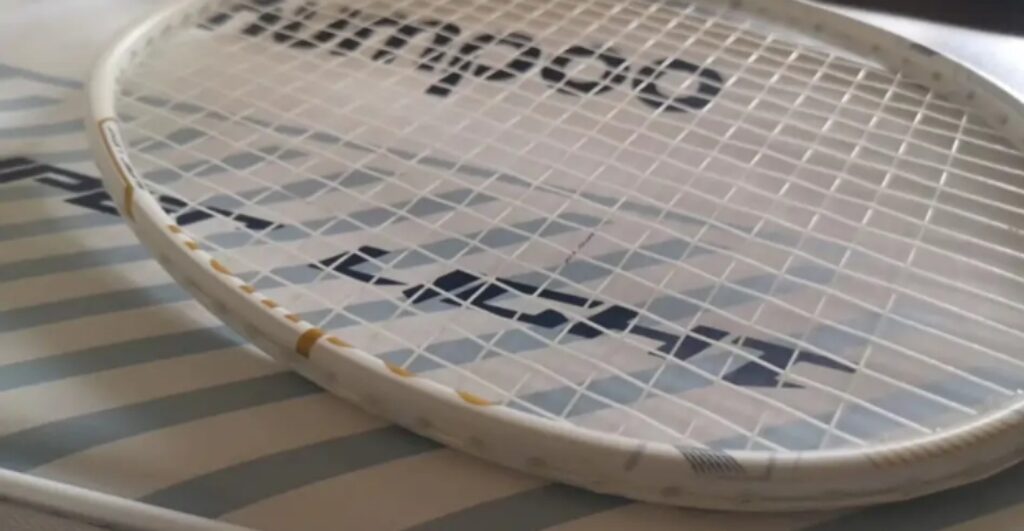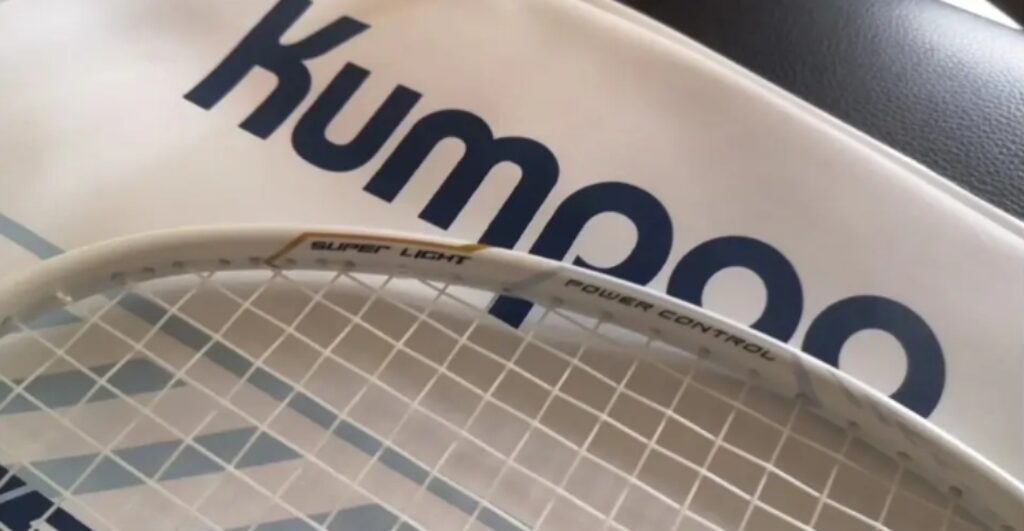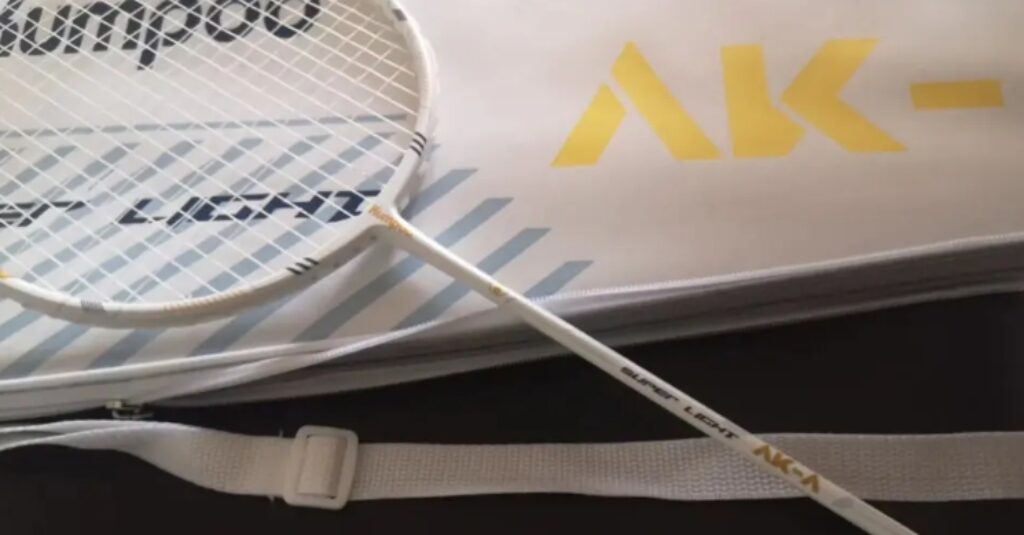Xunfeng has always had some strong products, but the mismatch between these products and the broader market’s needs often leads to criticism. This assessment is personal and not influenced by the brand’s promotional tactics.
The current product is a great example. I’m quite pleased with it, and it works well for casual matches with friends. As long as it’s not used for playing against stubborn teammates or leading games, it can still perform competitively. It’s particularly suitable for beginner players who lack strength, especially female players.
I first encountered Xunfeng with their unconventional 9U and 10U rackets, and this time is no exception. Thanks to a friend for providing the test equipment.

Specifications: 6UG5, with grip tape, total weight 84.0g, balance point 297mm, middle shaft length 217mm, medium hardness, box-shaped frame, 76-hole string bed, 9-3 o’clock string grooves, warranty for 30 lbs, strung with Xunfeng K70 strings at 24-26 lbs.
The pure white color has been used by many manufacturers, and Xunfeng is no exception, which easily reminded me of the K520. The golden middle shaft and frame sticker, along with minimal parameters or tech details, give it a very clean look. Perhaps due to cost control, there’s not much to say about the appearance. After all, white can cover a multitude of flaws, and the appearance isn’t an issue. But why the name AKA? As known as?

In terms of design, this racket offers only 4U and 6U versions, skipping the 5U version. The current 6U version aligns with mainstream ultra-light racket designs, with a medium shaft hardness and a high balance point that aids in leveraging. The borrowed racket had a thick grip tape, making the balance point nearly 300mm, which is quite notable.
When using it, the AKA provides both a light and powerful feel. The shaft tuning avoids excessive softness, preventing the “hitting cotton” sensation common in some ultra-light rackets. While the AKA’s power isn’t as strong as the K600, it still delivers acceptable speed. For its target audience, being able to hit the shuttle to the backline and maintain basic accuracy is sufficient, and the AKA fulfills this well.

Unlike the K600, which aims to increase downward force while remaining ultra-light, the AKA focuses on being a friendly and consistent tool. It’s understandable that balancing all aspects might be challenging, but for a higher price, one can get rackets that attempt to achieve this balance.
In practice, the AKA excels in mid-court drives and backcourt smashes. Both areas perform similarly to other ultra-light rackets, offering good speed and control. With its box-shaped frame and shaft, the AKA provides speed and control, making it effective for scoring with smashes and net play.

Against higher-level opponents who keep the shuttle deep, the AKA may struggle despite its consistency. However, it’s particularly good for defensive play and casual games. Its large sweet spot, elasticity, and swing weight meet the expected needs. Among the 6U rackets I’ve used, the AKA stands out for its solid base and slightly improved material quality and performance. Although the middle shaft’s explosiveness isn’t the highest, its recovery speed after deformation is excellent, making it more consistent than many ultra-light rackets.
If you’re experiencing aesthetic fatigue with other brands and need an ultra-light racket of this level, consider trying the AKA.


Leave a Reply